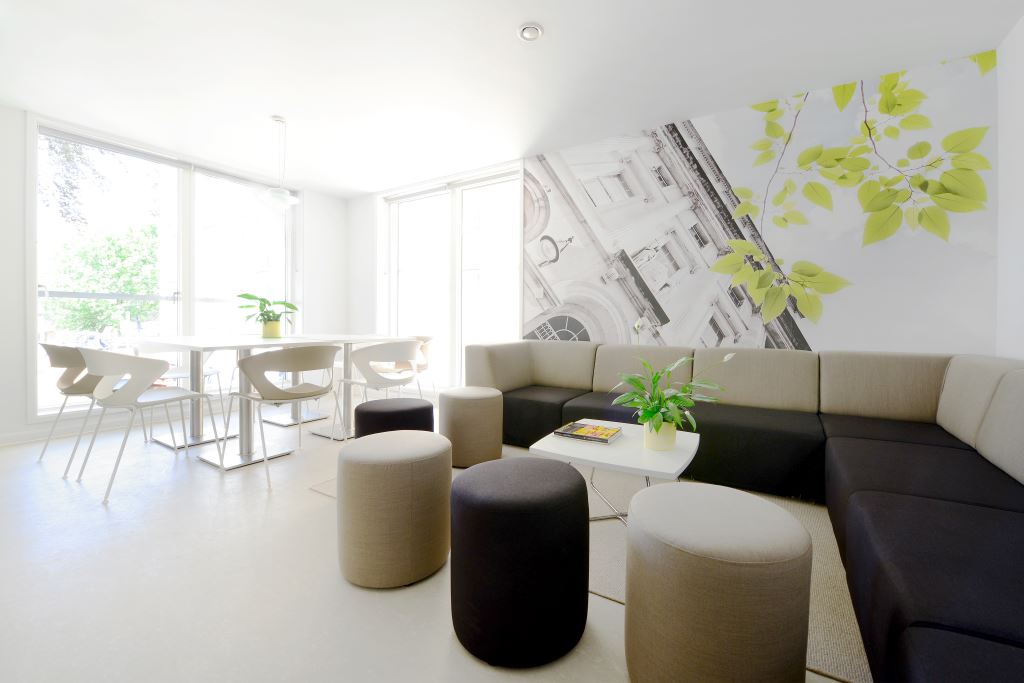Colours affect the way we think and feel, so choosing the right ones for workplaces matters. White emulsion may be cheap, but it is a false economy if the result is a stark, unfriendly office that workers are uncomfortable in.
That’s not to say that white is always the wrong colour. In medical and hi-tech environments where dirt and dust are the enemies, the need for an environment that shows these up overrides other considerations. Colours should be used in sympathy with each workplace’s primary function. Looking for creativity? A study by the University of British Columbia* suggests blue is the colour to go for. Perhaps more surprisingly, it noted significantly improved results in tasks requiring attention to detail when the workers’ surroundings were red.
Google, famous for its unorthodox work spaces, has deep enough pockets to use trial and error. While direct mailers have long tested different sales messages to see which is most effective, Google take this approach to a whole new level. They will decorate a space one way and gauge their employees’ responses, then completely redecorate, again check the responses, and see which of the two scores best (which, of course means further redecorating if the first option was the favourite!). Most companies won’t have the time or money for this, but there is enough empirical evidence of which colours work in which situations to make informed decisions. Generally, blues and greens are calming, while reds, oranges and yellows are energizing. Pale colours typically help to lift moods while dark ones can do the opposite. As with most such ‘rules’, though, thoughtfully bending or breaking them often leads to the most stylish and successful results.
The psychological impact of colours is also influenced by cultural considerations. While in the West we use red to indicate danger, in China red is seen as a lucky colour and used more widely. The respective colours of mourning in each are black and white – in Africa, red predominates. The multicultural nature of our society means that workplace design here in the UK needs to consider such nuances.
In many cases, companies like to reflect their brand colours in their décor. If these don’t lend themselves to covering whole walls, they can still be used as accent colours within a more neutral overall scheme. Using brand colours helps to reinforce the sense of identity and belonging for employees.
Selecting the best colours for workplaces is a mix of psychology, cultural awareness, commercial sense and design flair. Get it right and the workers will feel comfortable and happy. Get it wrong and you will soon hear about it!
*University of British Columbia. “Effect of Colors.” – 2009
